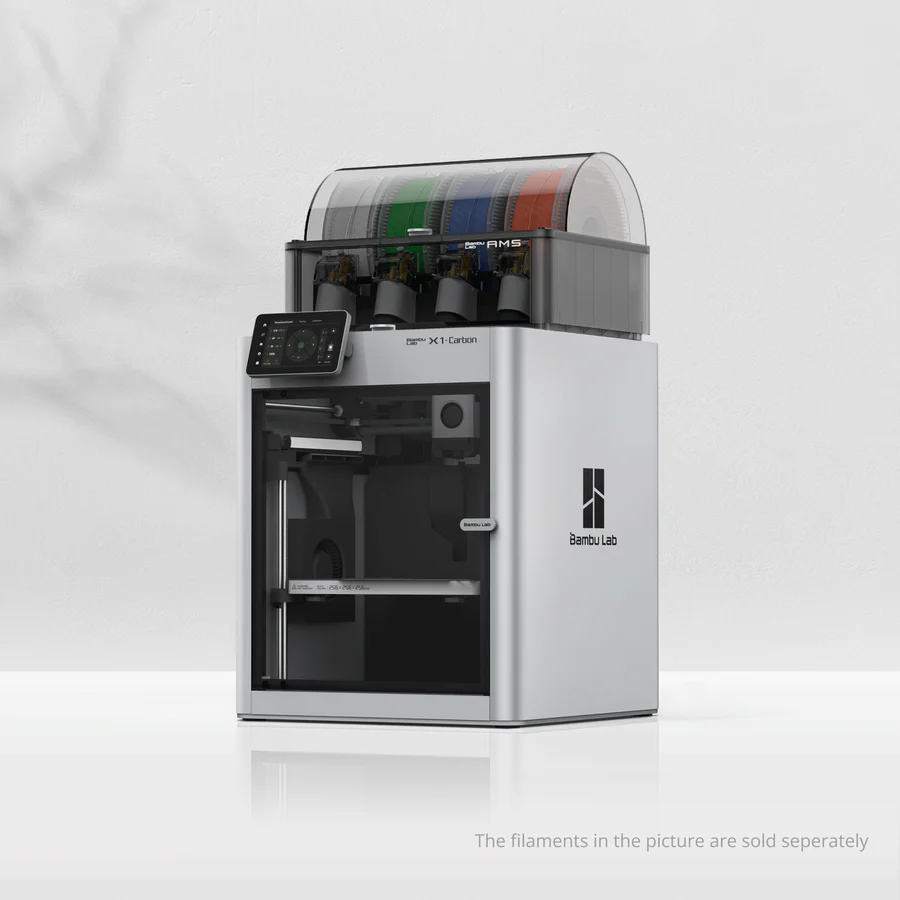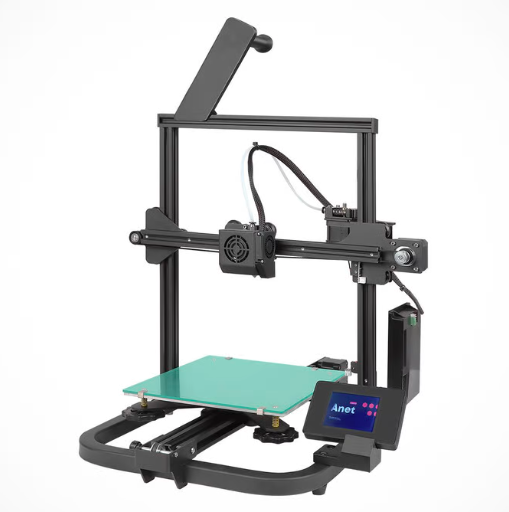Compare X1 carbon vs A8 V2
Comparison between the best 3D printers
Choose the best 3D printer at the best price. The cheapest 3D printers are here.
Buy a 3D printer here with 3D Fila.
 |
 |
|
| Model | X1 carbon |
A8 V2 |
| Printing Material | Filament | Filament |
| Buy Filament for Bambu Lab X1 carbon | Buy Filament forAnet A8 V2 | |
| Estimated price | $1449,00 | $129,00 |
| Manufacturer | Bambu Lab | Anet |
| Release Year | 2023 | 2021 |
| Print Volume [mm] | 256x256x256 | 220x220x250 |
| Printer Size [mm] | 389x389x457 | 428x441x486 |
| Weight [kg] | 14,13 | 6,2 |
| Power Loss Recovery | YES | NO |
| Enclosed printer | YES | NO |
| Bed Leveling | Automatic | Manual |
| Filament End Sensor | YES | NO |
| Bed type | Heated | |
| Power supply system | Direct Drive | Bowden |
| Standard nozzle | 0,4 | 0,4 |
| Maximum Nozzle Temperature [°C] | 300 | 230 |
| Maximum Bed Temperature [°C] | 120 | |
| Maximum printing speed [mm/s] | 500 | 150 |
| Filament holder | YES | YES |
| Camera for supervision | YES | YES |
| Recommended filaments | PLA, PETG, TPU, PVA, PA, PA-CF, Nylon, PC | PLA |
| Recommended slicers | Bambu Studio, Super Slicer, Cura, Prusa Slicer, Orca | Cura, Simplify, Slic3r, IdeaMaker |
| Maximum Resolution [mm] | 0,1 | 0,1 |
| Processor | Quad ARM A7 1.2 GHz | |
| Display | Touchscreen 5'' | Display touchscreen 2,8'' |
| Power Supply | 350 W | 110/220V / 250W |
| Connectivity | Wifi, Bambu bus, Cartão SD | SD / USB |
| Operating systems | Windows, Linux, Macbook | Windows, Mac, Linux |
| Date of registration in the system | 2024-04-10 | 2022-11-10 |
| Release date | 2023 | 2021 |
| Extra features | The Bambu Lab X1 Carbon revolutionizes 3D printing with stunning design, high print speeds, and a streamlined user experience. It stands out with its CoreXY system, a hotend capable of reaching 300°C, allowing for a wide range of filaments. Its LiDAR-assisted bed leveling system, vibration compensation, and AMS multicolor printing capability raise the industry standard. Print quality is impressive, with the ability to fine-tune for perfection. The X1 Carbon, with its closed build volume, not only promises but also delivers one of the most advanced 3D printing experiences available to consumers. | The Anet A8 V2 is a Cartesian-XZ type 3D printer with a build volume of 220 x 220 x 250 mm, Ender 3 design and V-slot assembly. It has a 32-bit motherboard and touchscreen interface, promising ease of use. It uses open source firmware and has thermal failure protection. It stands out for its cable organization and the absence of a heated bed, focusing on energy savings and PLA printing. It comes with an external power adapter, aiming at greater safety, especially for beginners and educational use. |
| Support for multiple colors and materials (AMS and CFS) | YES | NO |
Notes * |
||
| Cost-benefit | 7 / 10 | 6 / 10 |
| Hardware | 6.4 / 10 | 0.6 / 10 |
| Tela | . | . |
| Print volume | 4 / 10 | 3 / 10 |
| Performance | 4 / 10 | 1 / 10 |
Conclusion |
| In conclusion, the comparison between the Bambu Lab X1 Carbon and the Anet A8 V2 highlights significant differences in features, performance, and target users. The X1 Carbon, while priced higher, offers advanced technology, including automatic bed leveling, a closed printing environment, high print speeds, and compatibility with a wide range of filaments. It is designed for those who prioritize quality, versatility, and modern conveniences in 3D printing. On the other hand, the Anet A8 V2, at a much lower price point, caters primarily to beginners or those seeking a budget-friendly option without many of the advanced features found in more expensive models. It provides a solid entry point into 3D printing with essential capabilities but lacks the automation, performance speed, and material versatility that characterize the X1 Carbon. Ultimately, your choice should depend on your specific needs, budget, and experience level. If you are looking for a sophisticated and high-performance machine, the X1 Carbon stands out as a superior option. However, if affordability and basic functionality are your main concerns, the A8 V2 is a respectable alternative. |

